Good morning. I have a list for you today! It’s in my nature to make lists and sometimes, when I think I’ve made a particularly good list, I share it with you. This one is all about native medicinals that you can add to your herb garden or yard plantings.
Lists are all about discernment. My partner and I love to talk about what we like and don’t like (Virgos). The other night we ended up at a show for an artist we thought we both liked but 30 seconds into the set we were locking eyes and wordlessly planning our exit. We still had a magical night out and our mutual surprise and horror about the music ended up being hilarious and turned into an evening we’ll remember for a long time. Experiencing something and realizing you don’t like it can give you more information about yourself and help you realize what it is you really do like.
In this case, here is a list of herbs I definitely like, love even. I bet you will not guess what I named number one because it is an herb I have low key rudely ignored for years!
Top 10 native plants to add to your garden
10. California Poppy (Eschscholzia californica)
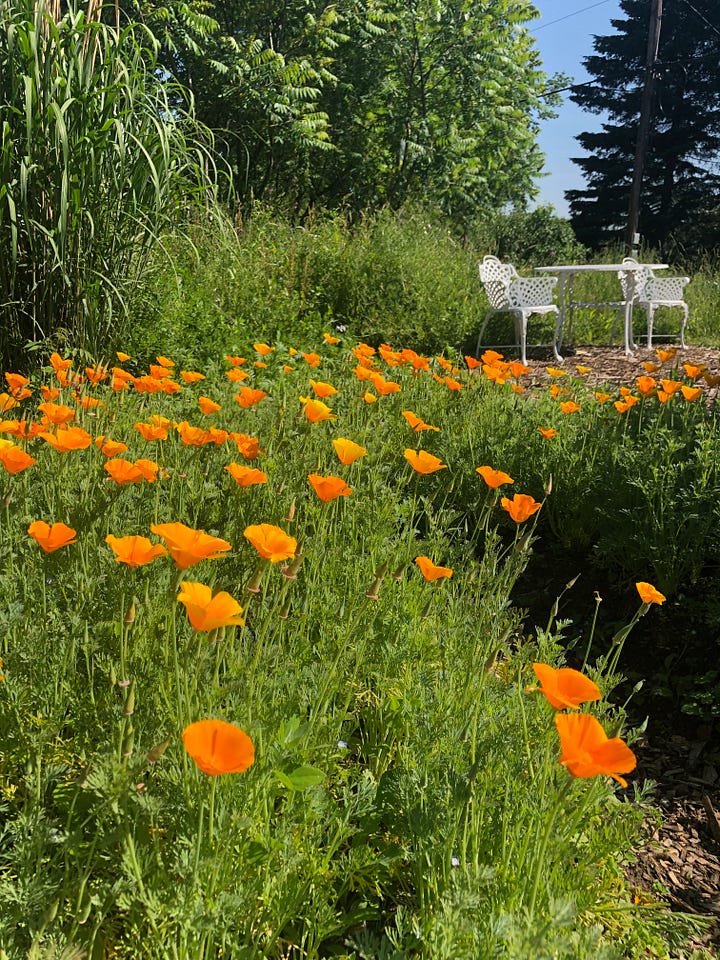
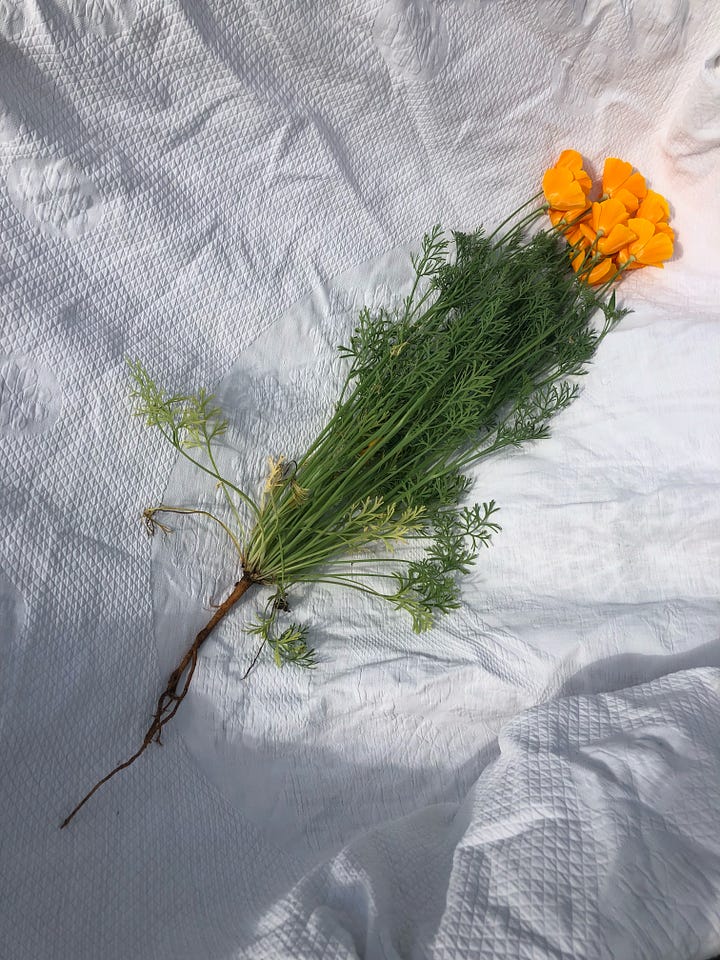
Sun needs: full sun
Soil needs: well drained
California Poppy is one of my favorite plants to grow. I sow it in mid march when most of the garden is still sleeping. The task gives me a reason to return to the garden and prep a nice big patch for it. I direct seed instead of transplanting because California Poppy likes to grow in place and benefits from the stark changes in temperature early spring has to offer. By June, the California Poppy patch is in full bloom! This is when I make my harvest and I use the whole plant: flower, root, and stem. I leave a few along the edge of the patch to collect seed from, but the rest of the patch gets planted with another crop (usually cut flowers) which stay there for the rest of the growing season.
California Poppy is an annual and in milder climates it may self seed year after year, almost acting as a perennial planting.
California Poppy has mild sedative and analgesic properties. This herb is calming in a gentle way and helps to ease nervous tension.
California Poppy is last on the list because we are past the window of when to seed it. Put it on your list for next year!
9. Pleurisy Root (Asclepias tuberosa)
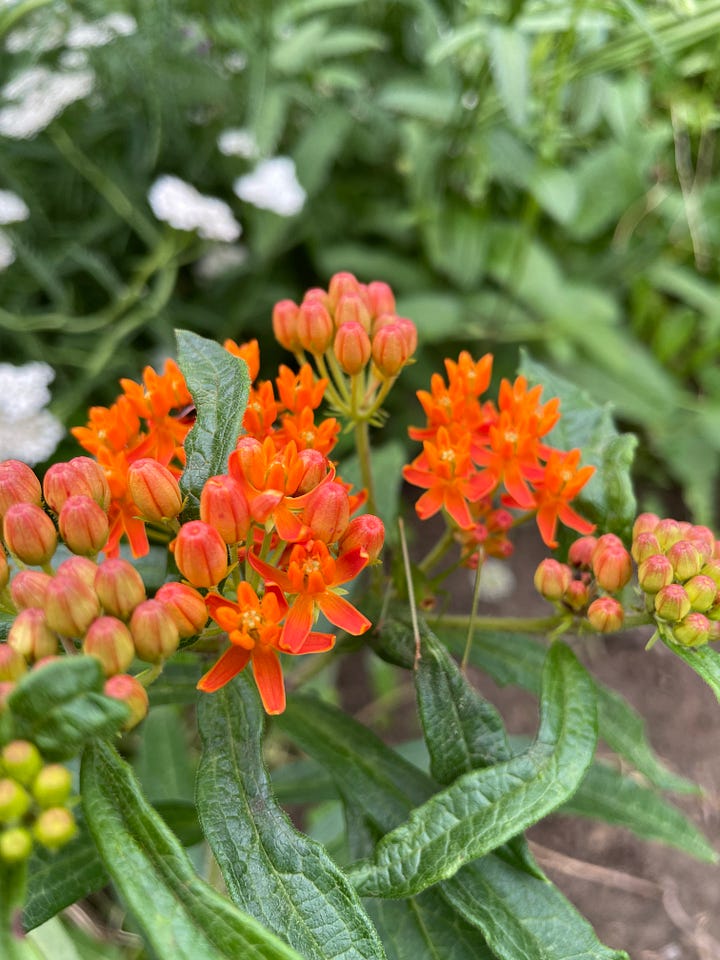
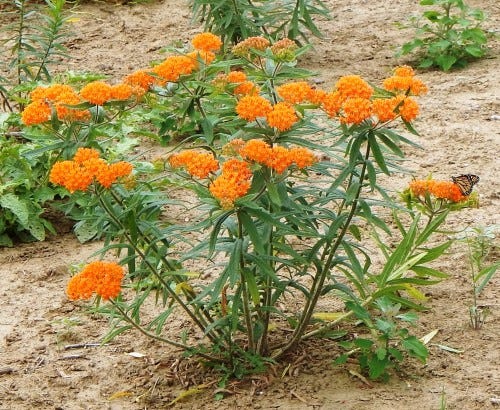
Sun needs: full sun
Soil needs: well drained, dry
Pleurisy Root is a species of milkweed with a history of medicinal uses, hence the name. You can plant this perennial in your garden anytime but expect it to be quite slow growing that first year. The orange blossoms are stunning and I think this herb has a place in herb gardens and display gardens alike. If you know someone trying to plant more native plants in their flower beds, I would recommend Pleurisy Root, or as it’s sometimes known by its latin name, Asclepias.
“As its name implies, it is one of the best remedies for pleurisy. It eases chest pain and is good for hot, dry conditions of the chest. Pleurisy root is an excellent diaphoretic: it relaxes the peripheral capillaries and increases perspiration.” - The Modern Herbal Dispensatory by Thomas Easley
8. Echinacea (Echinacea purpurea)


Sun needs: full sun, part shade
Soil needs: well drained, dry
Sub out the multicolored cone flowers in your flower beds for native Echinacea. There are a few medicinal species to choose from (E. angustifolia, E. pallida) but E. purpurea is the easiest to grow. This perennial plant will come back year after year, growing stronger and more beautiful with each season. To keep the planting vigorous, divide and share with friends.
Echinacea medicine is best taken in hefty doses when you acutely need it, rather than in small doses as a preventative. The latter lessens its effectiveness. If you feel yourself coming down with strep throat - that is a perfect time to double down with doses of Echinacea tincture.
Photos of Echinacea from Bluestone Perennials and Strictly Medicinal Seeds
7. Blue Vervain
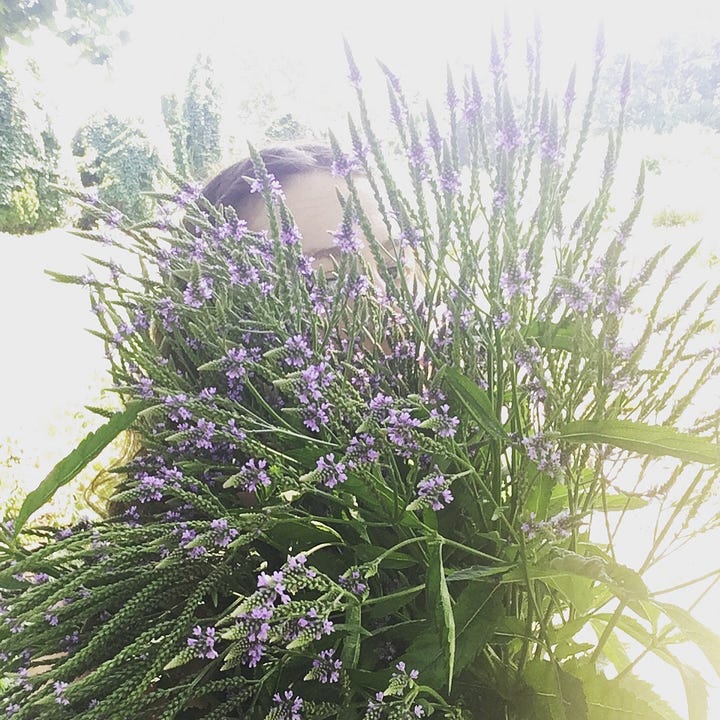
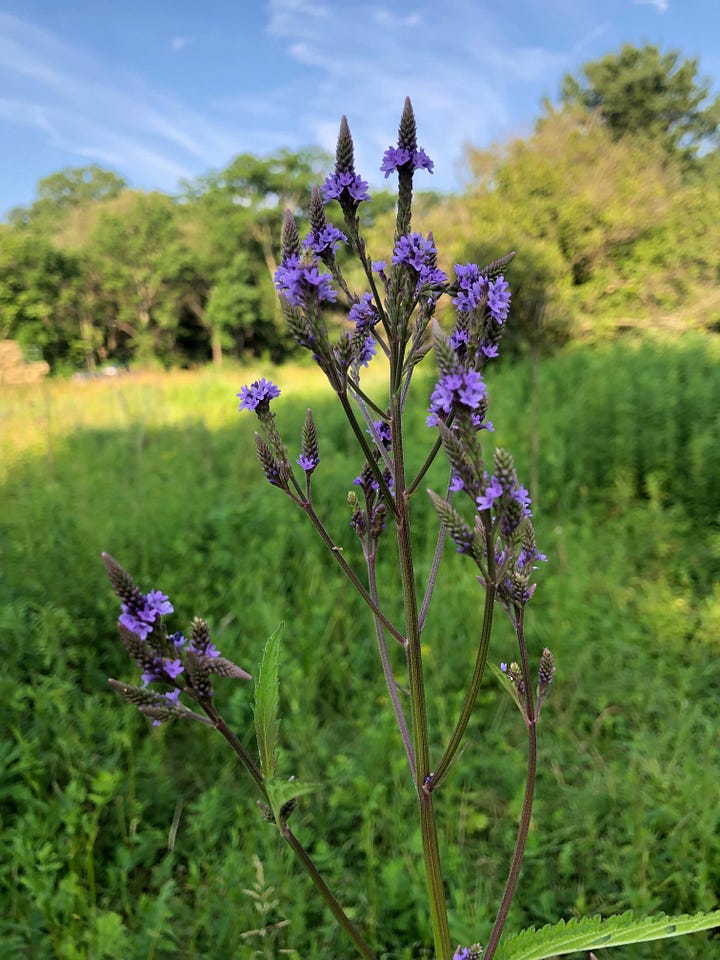
Sun needs: full sun, part shade
Soil needs: wet, moist
When we first walked the land of the place that would become our home in Brooktondale, I noticed a light purple-blue cast on the meadow. It was the simultaneous blooming of dozens of Blue Vervain plants. They are striking, elegant plants that I’m surprised do not get more air time in people’s display gardens, let alone herb gardens. Blue Vervain is a perennial that loves wet meadows.
A key herb for nervous system support, mood improvement, digestive system support, menstrual cycle support, and releasing musculoskeletal tension & holding patterns.
Blue vervain is an intensely bitter herb with a tremendous effect on the nervous system. It has a reputation for working on tension in the stomach area linked to suppression of emotions, especially anger. It is suitable in digestive bitters formulas where there is a simultaneous need to work on the digestive system (increasing stomach acid & digestive juices) while giving nervous system support.
Energetically, Blue Vervain is indicated for people who are perfectionists to the point of getting in the way of themselves, causing undue and counterproductive stress. In this case, a few drops can be a catalyst for loosening the limbs and relaxing the overactive mind.
6. Calamus


Sun needs: full sun, part shade
Soil needs: wet, moist
Do you tend to a pond or wetland? Plant Calamus upon the banks! This beautiful reed-like plant has been referenced as a medicine for centuries. As a strewing herb to release a bright, aromatic scent when stepped on, as a bitterroot for digestive complaints, as a root to chew on to relieve sore throats and promote sweet vocalizations. I love the TCM indications for Calamus: “To restore the bright yang of consciousness” and “For phlegm misting the orifices of the heart”.
Read all about Calamus in my favorite monograph of the herb, by jim mcdonald.
Photos from North Carolina Gardener Extension
5. Monarda (Monarda fistulosa)


Sun needs: full sun, part shade
Soil needs: well drained, dry
A mint family perennial also known as bee balm or wild bergamot. There are several beautiful, native Monarda specifies to choose from for your garden. This one, however, is my favorite (M. punctata coming in close second). The masses of blooms will make you and every visitor to your garden swoon. This is one that will spread generously and allow you to divide and share with your neighbors so everyone can have pink puffs of blooms floating around their gardens and yarden/meadows.
And why not have masses of monarda flowers that you can make medicine with? Dry for a tea to drink during cold and flu season or make into a tincture to preserve and have the medicine ready to go. Here is a monograph if you would like to read more about Monarda fistulosa’s medicine.
Photos from Garden Goods District
4. Lobelia (Lobelia inflata)


Sun needs: full sun, part shade
Soil needs: rich soil
Lobelia can be found as a self sowing annual along woodland walkways. Growing no taller than 2 feet and without much fanfare - you might miss Lobelia unless you were specifically looking for it. The purple and white flowers become inflated seed pods, resembling balloons - hence the latin species name, inflata. There are showier options for the garden, L. siphilitica (Great Blue Lobelia) and L. cardinalis (Cardinal Flower) but L. inflata has the strongest medicine in my estimation. I like to keep Lobelia around the garden because I find taking a tiny, tiny nibble of the leaf to be extremely relaxing in moments when I need that medicine acutely and I also find the plant beautiful in an understated way.
Lobelia is a supremely anti-spasmodic, low dose herb with an affinity for relaxing tension in the musculoskeletal and respiratory systems. It is a key herb for lingering respiratory ailments, musculoskeletal holding patterns, as a tiny part of a formula for anxiety, and in smoking cessation protocols. Lobelia is a bronchial dilator and can be a key herb in asthma formulas. Lobelia beckons the age old question: am I relaxed in my mind because my muscles have relaxed or are my muscles relaxed because my mind is relaxed?
Photos from Native Plant Trust
3. Yarrow
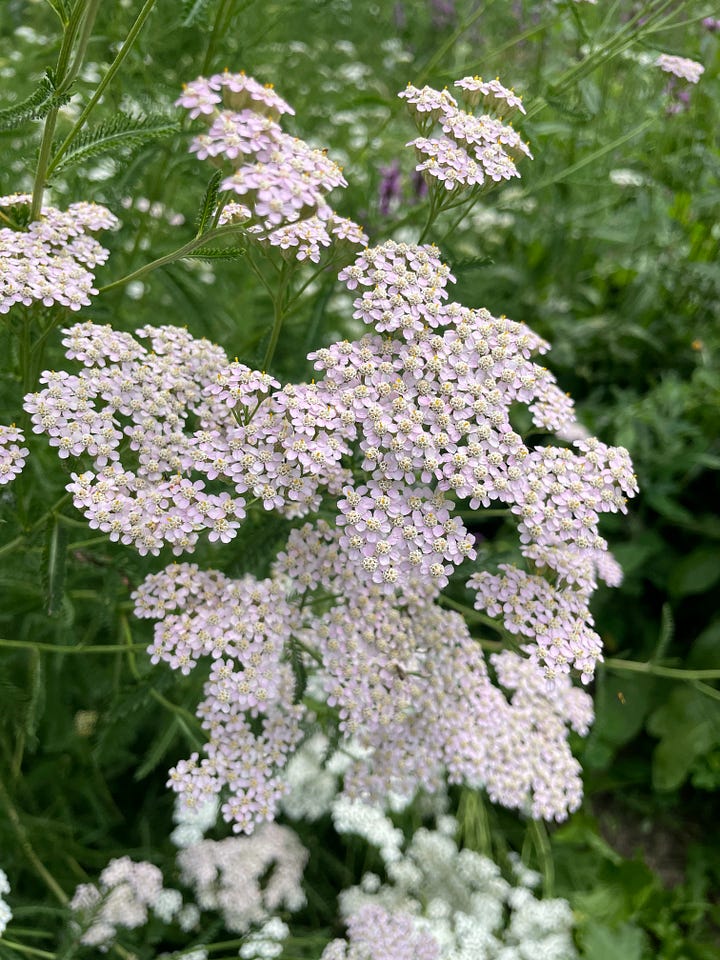

Sun needs: full sun, part shade
Soil needs: well drained, dry
Yarrow is another perennial that will grow into big, beautiful patches that in time you will be able to divide and share with your neighbors and friends.
I love to grow yarrow in big patches so that I can fill my copper still with it and distill it’s gorgeous blue hydrosol. Yarrow contains a precursor to azulene and through the process of steam distillation, that precursor is converted to azulene. Azulene is responsible for the beautiful blue color the the resulting yarrow hydrosol, pictured above. Yarrow hydrosol is soothing and pH balancing for the skin.
Yarrow has hemostatic and diaphoretic properties. It used to be employed in hospitals to stop bleeding, though it has since been replaced. Combined with proper wound cleaning and effective bandaging, yarrow helped me avoid stitches on a deep hand wound. As for the diaphoretic properties, yarrow flowers can be mixed in equal parts with mint leaves and elder flowers for a tea blend to help open the pours and break a fever.
2. Skullcap (Scutellaria lateriflora)
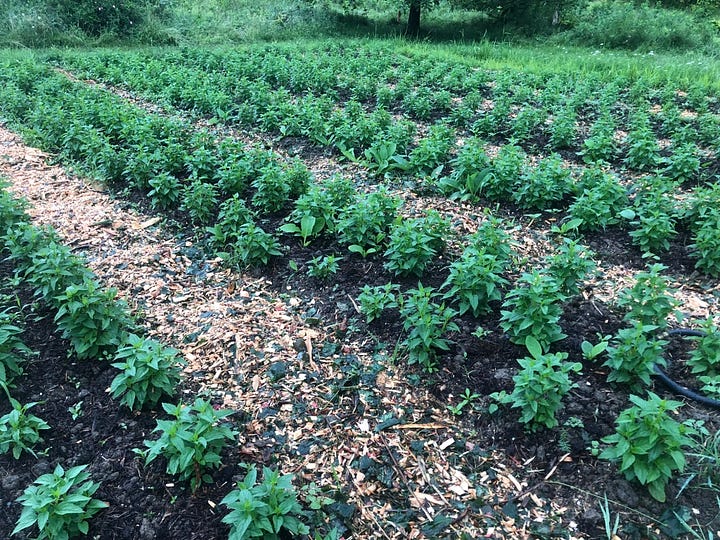
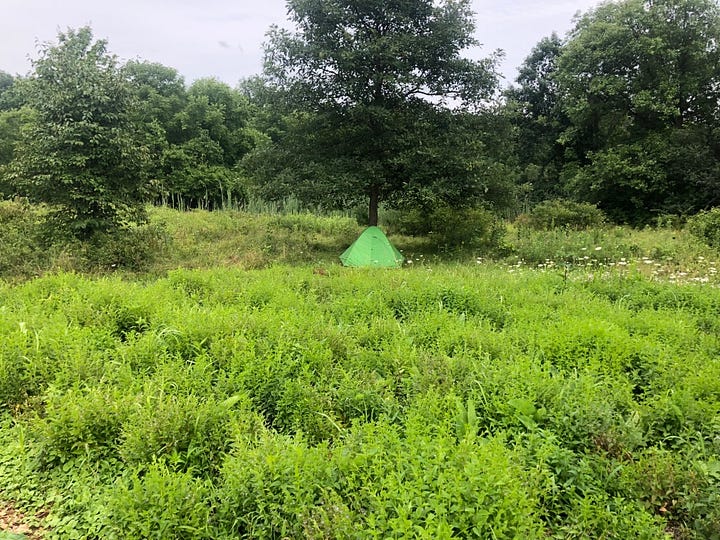
Sun needs: full sun, part shade
Soil needs: well drained, wet
Pictured above is the time Hayden and I grew a field of Skullcap with our friends Hannah and Claire among other volunteers. Sorry I don’t have any close-ups of the beautiful lateral flowers here, but you can look them up! Skullcap is a lush, herbaceous perennial that makes medicine that pretty much everyone I know could use. It loves to grow in a wet meadow / forest edge and will come back year after year!
Skullcap is one of the precious few nerve tonics we can grow easily in the Northeastern US. A nerve tonic is similar to a nerve relaxant, in that it helps relieve stress and tension. Additionally, a nerve tonic taken regularly will nourish and replenish a depleted nervous system. We deplete our nervous systems in all kinds of ways: drinking too much caffeine, not sleeping enough/not getting good quality sleep, stressful jobs, trying to survive capitalism, and caretaking, just to name a few. Though many herbs seem to be suited to a particular situation or person, Skullcap has proven a wide general benefit. The person who Skullcap is directly indicated for is someone who feels like their nervous system has been frayed: each sound, smell, noise, touch, or any sensory stimulation feels like a personal attack.
1. Anise Hyssop (Agastache foeniculum)


Sun needs: full sun, part shade
Soil needs: well drained, dry
Here we are at number one! I’ll admit it. I overlooked Anise Hyssop for years. I convinced myself I didn’t like the taste and there was something about this mint family plant that just seemed…elementary (I know, I’m sorry). It’s very easy to grow and reseeds readily in addition to being perennial so it was almost too ubiquitous in my gardens for how little I was working with it- I was like, enough Anise Hyssop already! And then I stopped growing it. Genuinely, I forgot it was even one of our native plants of northern North America. The other night I was at the house of an herbalist friend (hello Chanelle) and my throat got scratchy from talking non-stop (as we do when we are together). She served me up a tea with a base of Anise Hyssop and not only did I love the taste but it immediately soothed my scratchy throat and not just while I was drinking it, for the rest of the night. I feel so excited to be reacquainted with this herb and am SO looking forward to growing it in my garden as soon as Hayden and I break ground at our new place (soon)!
Comments are open and I want to know: Did number one surprise you? Which of these are you most excited to plant this year? You can share any herbaceous native medicinals that would have made your top 10 list too!
Thanks for reading.
Happy planting,
Geraldine





love that anise hyssop was #1! ive been wanting to incorporate this friend in my lofe more and this gave me some inspiration. great list! thanks for sharing:)
Haha! I had this experience at a show a few years ago. My boo & I were holding back comments and looks bc it was a fairly ~intimate~ concert of a band that just... was not for us. Despite not loving the actual music, it was so memorable and funny afterward. I love it.
And ofc thank you for the list <3